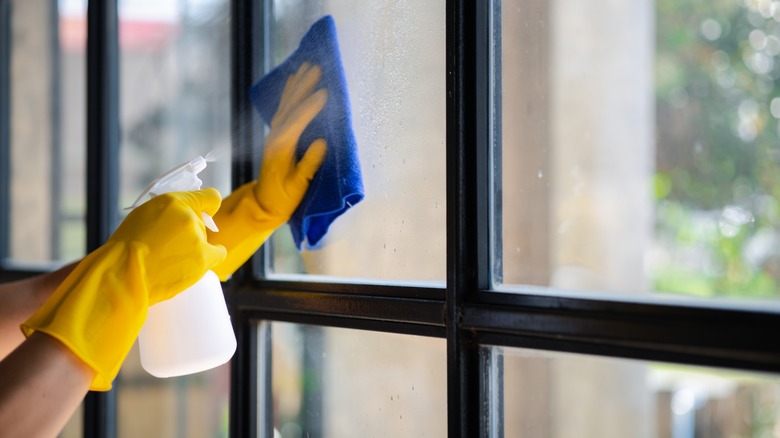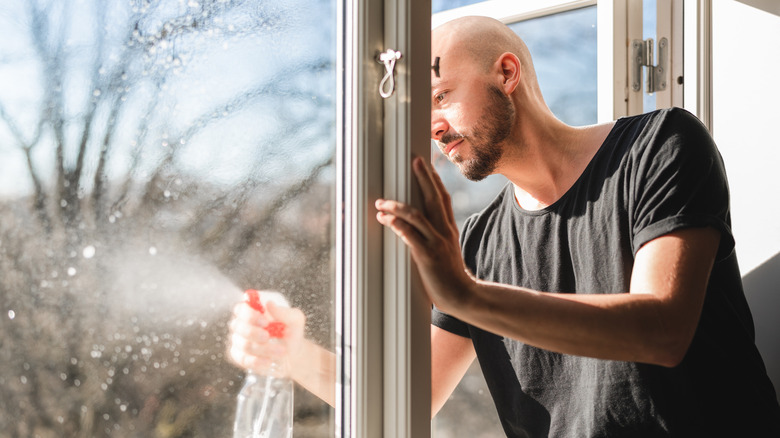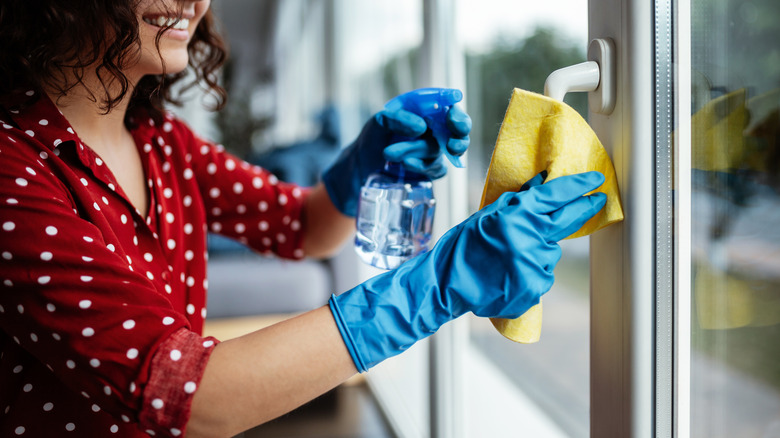One Ingredient Will Make Your Windows Cleaner Than Ever
If you clean your home regularly, you likely have a type of glass cleaner under your sink, whether it's Windex, Zep, or a generic brand. Many labels promise a streak-free shine or a spot-free finish. Cleaning agents like isopropanolamine and ammonium hydroxide are the ingredients that give window cleaners these properties, but did you know you don't actually need to buy a glass cleaner to clear up the dirt and dust from your windows? If you have some ammonia sitting around, you can mix it with just water and other ingredients to give your glass a comparable shine.
For best results, you'll want to combine the ammonia solution in a spray bottle. That way, you can spray your windows the same way you would with a standard window cleaner. Since ammonium hydroxide -– a solution of ammonia in water –- is an active ingredient in many window cleaners, it makes sense that using ammonia mixed with water can be an effective cleaner on certain surfaces. However, it's important to consider some of the risks involved in using ammonia as a window cleaner before you start mixing.
How to clean windows with ammonia
You can find many different recipes online for homemade window cleaners that use ammonia. This increases the chances that you'll be able to clean your windows with what's already under your kitchen sink without needing to make a trip to the store. Reader's Digest recommends mixing 1 cup of clear ammonia with 3 cups of water, spraying the solution onto a soft cloth, and wiping your windows.
If your windows have stains that don't come off with ammonia and water alone, try Big Apple Window Cleaning's tip. You can either add 2 more cups of ammonia to the solution from above or create a new solution with 1 cup of ammonia for every 1 cup of water. Then, add ½ a cup of vinegar and a drop of dish soap to the bottle and shake it a few times until all ingredients are well mixed. After spraying the window, wait five minutes before wiping it.
Cleverly Simple also shared a recipe for homemade glass cleaner with ammonia, based on the 2002 Consumer Reports booklet, "How to Clean Practically Anything." This option is similar to Big Apple's, minus the vinegar. Mix 4 parts water with a drop of dish soap and 1 part ammonia, spray, and wipe.
The risks involved in cleaning windows with ammonia
If you've ever smelled pure ammonia before, you know how potent it is. It's why the chemical is used to arouse consciousness after someone has fainted. When dealing with pure ammonia, take precautionary measures to prevent irritation to your body by wearing gloves and goggles, and ensuring sufficient ventilation. Excessive inhalation may occur during the mixing process, which can cause throat and nose irritation and coughing, or worse, if the concentration is high enough. Ammonia can cause skin and eye irritation as well.
The amount of tint on the windows is another factor to consider before deciding to clean your windows with a DIY ammonia solution. Tinted windows can't effectively be cleaned with ammonia because the chemical will damage the film. The damage can range from bubbling to peeling to cracking. Although you likely won't see these effects right away, over time and with continuous cleaning, you will. So, if you plan to make your own ammonia solution to clean your windows, it's best to limit it to your indoor windows or untinted auto windows to prevent damage. As always, remember to wear protective gear and use caution when mixing the solution.


